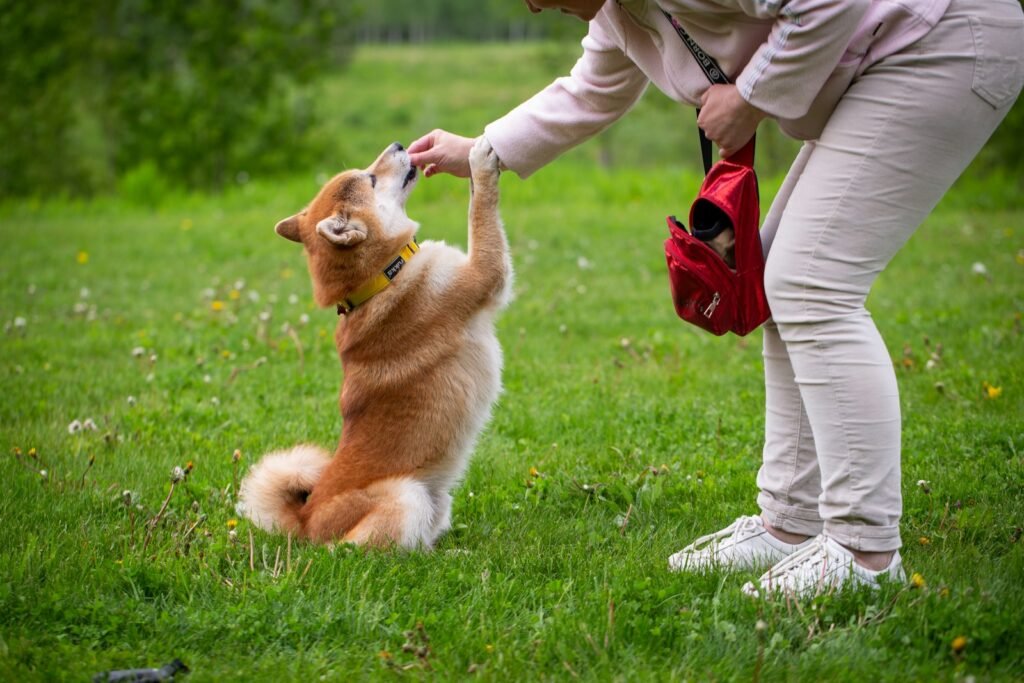If you’ve ever looked into your pup’s eyes and thought, “I wish you could talk,” we’ve got good news: they already are. Just not in the way you expect.
While we humans babble on with baby talk and commands, dogs are holding up their end of the conversation—through body language, facial expressions, tail position, and more. And according to animal welfare researchers, the better we get at understanding their “language,” the stronger our bond becomes.
Baby Talk Isn’t Just for Babies

When we chat with our dogs, we use a special kind of speech called “dog-directed speech,” similar to how we talk to babies. High pitch, exaggerated tone, and plenty of repetition? Yep, that “Who’s a good boy?!” actually has a scientific name. Dogs do respond to this speech resulting in stronger bonds with their human.
Thanks to something called “baby schema,” where round faces and big eyes trigger our natural urge to nurture, we are also helping to form attachments. So when you instinctively coo at a puppy, it’s your biology talking.
Not Just Sit and Stay

Dog communication goes far beyond commands. Research shows we use nearly 10 different types of speech with our dogs—from firm instructions to silly ventriloquism when we speak as our dogs (“Did someone say treat?”). We even mimic dog behavior, like play bows or goofy barks during playtime. There’s a more stern tone we take with “no” or calming a dog during traumatic times like thunderstorms or fireworks.
Each form of speech serves a purpose—encouragement, correction, bonding, reassurance—and your dog listens for tone, timing, and intent more than specific words.
Some Dogs Know Words—Lots of Them
While most dogs pick up a handful of words over time, some superstar pups go above and beyond. Chaser, a border collie and canine Einstein, learned the names of over 1,000 toys and could follow complex instructions like “take the frisbee to the ball.”
Her understanding of syntax suggests dogs aren’t just reacting to tones—they’re capable of recognizing word order and meaning. But even without Chaser-level training, all dogs are paying attention, especially when we talk with intention.
But What Are They Saying?

Dogs communicate constantly. Lip licking, yawning, looking away, leaning in—these are all clues to how your dog is feeling. Unfortunately, when we miss or misinterpret these polite signals, dogs may escalate to more obvious ones like growling or snapping.
It’s not aggression—it’s communication we’ve ignored.
Dogs live in a scent-driven world, where smell tells them what we can’t see. They don’t need a hand to sniff; they already know who’s who from across the yard. Learning to respect their cues, rather than forcing interaction, especially with strangers, is key to creating a safer, more respectful relationship.
Consent Matters
Modern animal welfare puts a big emphasis on consent—yes, even in dogs. Just because a dog is cute doesn’t mean it wants to be touched. Teaching kids to spot when a dog wants attention (tail wagging, relaxed body) versus when it doesn’t (stiff stance, looking away) sets up healthier interactions all around.
The Bottom Line: Listen Up
Dogs may not use words, but they’re absolutely speaking. And once you tune into their nonverbal cues, a whole new world of understanding opens up. So next time your pup yawns mid-pet or looks to you when a stranger approaches, remember: they’re telling you something.
And lucky for us, they’re incredibly patient while we learn to listen.






